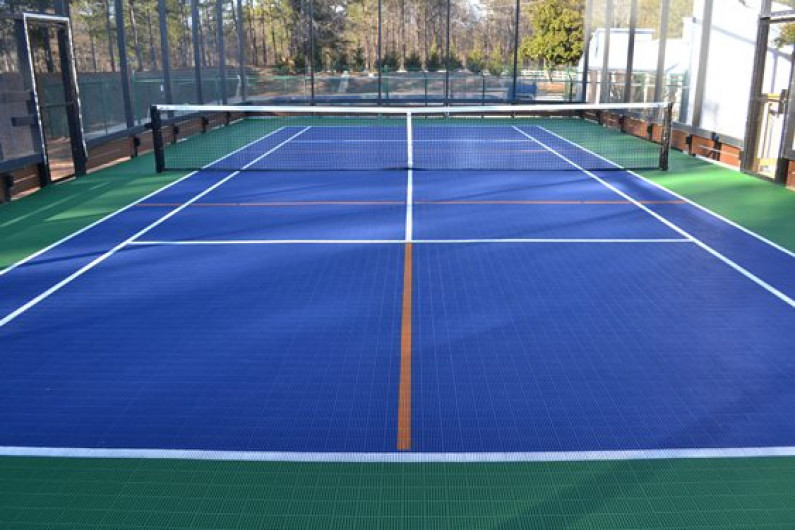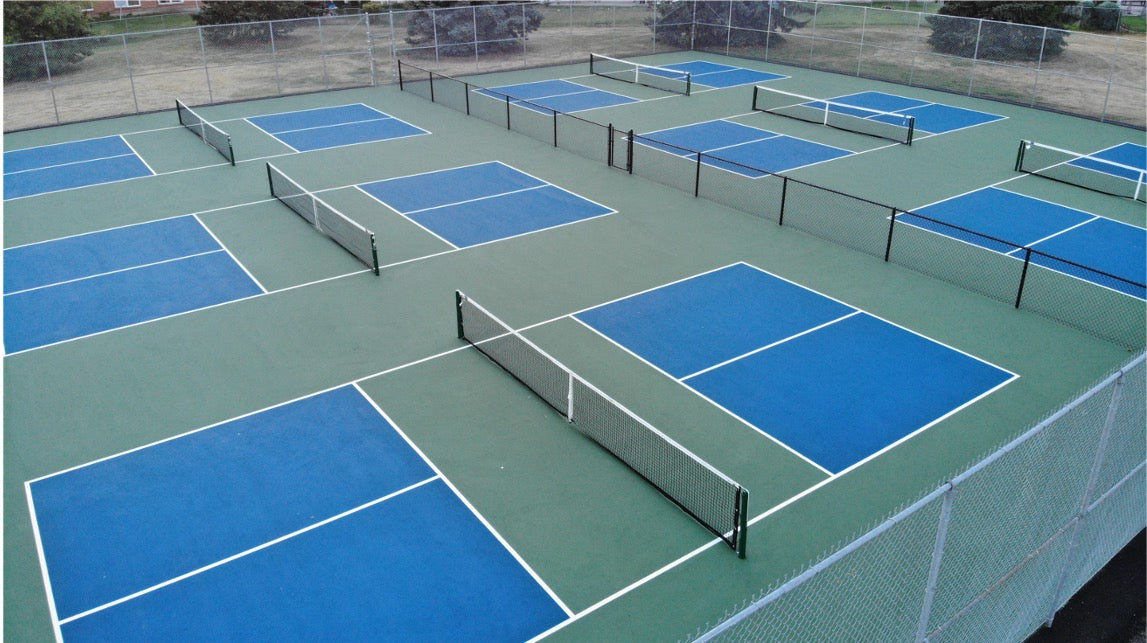Innovations in Pickleball Court Construction: Trends You Need To Know
Innovations in Pickleball Court Construction: Trends You Need To Know
Blog Article
From Layout to Complete: Your Guide to Building a Pickleball Court
Creating a pickleball court is a complex task that needs a critical technique, beginning with the selection of an optimum location that balances ease of access and engagement. The layout phase is crucial, as it involves adhering to main court measurements while thinking about exterior elements such as sunshine and sound. Material selection likewise plays a considerable function in ensuring the court's durability and efficiency. As we check out the crucial actions in this process, you'll discover what it takes to change a principle right into a fully functional center that satisfies the requirements of its players.
Selecting the Right Area
When planning to build a pickleball court, it is vital to regularly consider the location, as it plays a vital function in the general functionality and satisfaction of the center. Choosing a site that is conveniently accessible enhances participation, making sure that gamers can comfortably get to the court without significant travel barriers (Pickleball court construction). In addition, distance to property areas, parks, or area centers can cultivate a sense of neighborhood interaction and increase usage
The terrain is one more crucial variable; a level, well-drained location minimizes maintenance problems and offers a secure playing surface area. Preventing areas vulnerable to flooding or extreme wind will also improve the having fun experience. Furthermore, think about the sunlight's path throughout the day; positioning the court to decrease glare can dramatically boost exposure for players.
Noise levels need to be analyzed, as finding the court near high-traffic roads or loud environments may diminish the having fun experience. Zoning authorizations and regulations need to be reviewed to ensure compliance with local legislations. By very carefully evaluating these facets, one can safeguard a location that not only meets practical demands but additionally improves the total satisfaction of pickleball.

Designing Your Court Format
After picking an ideal place for your pickleball court, the next action involves designing an efficient court format that makes best use of functionality and gamer experience. Begin by adhering to the official dimensions stated by the USA Pickleball Organization, which determine a court dimension of 20 feet wide by 44 feet long for both songs and doubles play.

Following, position the court to minimize sunshine glow, ideally aligning it north-south, which helps keep visibility during games. Take notice of accessibility, making certain paths for players, viewers, and upkeep equipment.
If your style includes several courts, area them properly to decrease sound and disruption throughout play, while likewise enabling viewer areas. Include assigned areas for seats, storage, and features such as hydration terminals. Thoughtful preparation of these components will certainly create a welcoming and practical atmosphere for gamers of all skill degrees.
Selecting Products and Surfaces
Exactly how can the appropriate option of products and surfaces boost the gameplay experience on your pickleball court? Picking ideal materials and surfaces is essential for optimal efficiency, security, and durability of your court. The most commonly made use of surfaces include asphalt, concrete, and specialized sports ceramic tiles, each offering distinctive benefits.
Asphalt gives an economical choice, offering a smooth surface area that enables good ball bounce and traction. Concrete, while much more pricey, delivers sturdiness and marginal upkeep, making it ideal for high-traffic locations. For Homepage those looking for innovative efficiency, specialized sports tiles are readily available in different shades and appearances, made specifically for pickleball. These ceramic tiles offer outstanding hold and cushioning, lowering the risk of injury.
Additionally, consider the influence of surface color and structure on exposure and gameplay. Brilliantly tinted surface areas enhance round exposure, while distinctive surfaces can help manage the speed of the sphere, catering to varied playing styles. Eventually, the selection of surfaces and materials ought to straighten with your budget, desired appearances, and the degree of play you want to accommodate, ensuring a quality experience for all players.
Construction Steps to Follow
Beginning on the construction of a pickleball court needs careful preparation and implementation to guarantee a high-grade having fun surface area. Begin by noting the measurements of the court, which measures 20 feet by 44 feet for increases play. Excavate the area to a depth of roughly 4 to 6 inches, making certain appropriate drain and a level structure.
Following, set up a secure base using smashed rock or crushed rock, compacting it thoroughly to produce a solid structure. Once the base is established, apply a concrete slab, ensuring it goes to the very least 4 inches thick. Smooth the surface area for optimal playability, allowing it to cure for the advised time, typically around 28 days.

Last Touches and Upkeep
Completing the building Get More Info and construction of a pickleball court includes essential last touches and continuous maintenance to ensure durability and ideal performance. Guarantee that the surface area is appropriately treated and complimentary of particles. A detailed cleaning eliminates dust, dirt, or any kind of materials that can impact gameplay. In addition, use a top notch court coating to boost grip and protect against wear.
Next, inspect the internet and messages for Visit Website appropriate positioning and stress. A properly maintained web is critical for reasonable play, so changes may be necessary after initial use. Install limit lines making use of durable, weather-resistant paint to preserve presence in time.
Routine maintenance is vital to maintaining your court (Pickleball court construction). Set up periodic evaluations to check for surface area fractures, fading lines, or drainage problems. Motivate fixings will stop small problems from escalating into major problems
Conclusion
In summary, the successful building and construction of a pickleball court involves an organized strategy, starting with the option of an ideal place and careful design of the court layout. The option of products considerably influences the court's longevity and efficiency, while adherence to well-known building actions makes sure quality execution. Ultimately, consistent maintenance and the application of top quality coatings are important for maintaining the court's condition, therefore offering an optimum having fun experience for all participants.
How can the ideal choice of materials and surfaces boost the gameplay experience on your pickleball court?Beginning on the building and construction of a pickleball court requires mindful planning and execution to ensure a high-quality having fun surface.After healing, paint the court lines utilizing top quality, outdoor-grade paint, sticking to the official dimensions for pickleball courts.Completing the building of a pickleball court includes necessary last touches and ongoing upkeep to make sure long life and optimum performance.In summary, the effective construction of a pickleball court involves a methodical method, beginning with the option of an appropriate area and careful design of the court layout.
Report this page